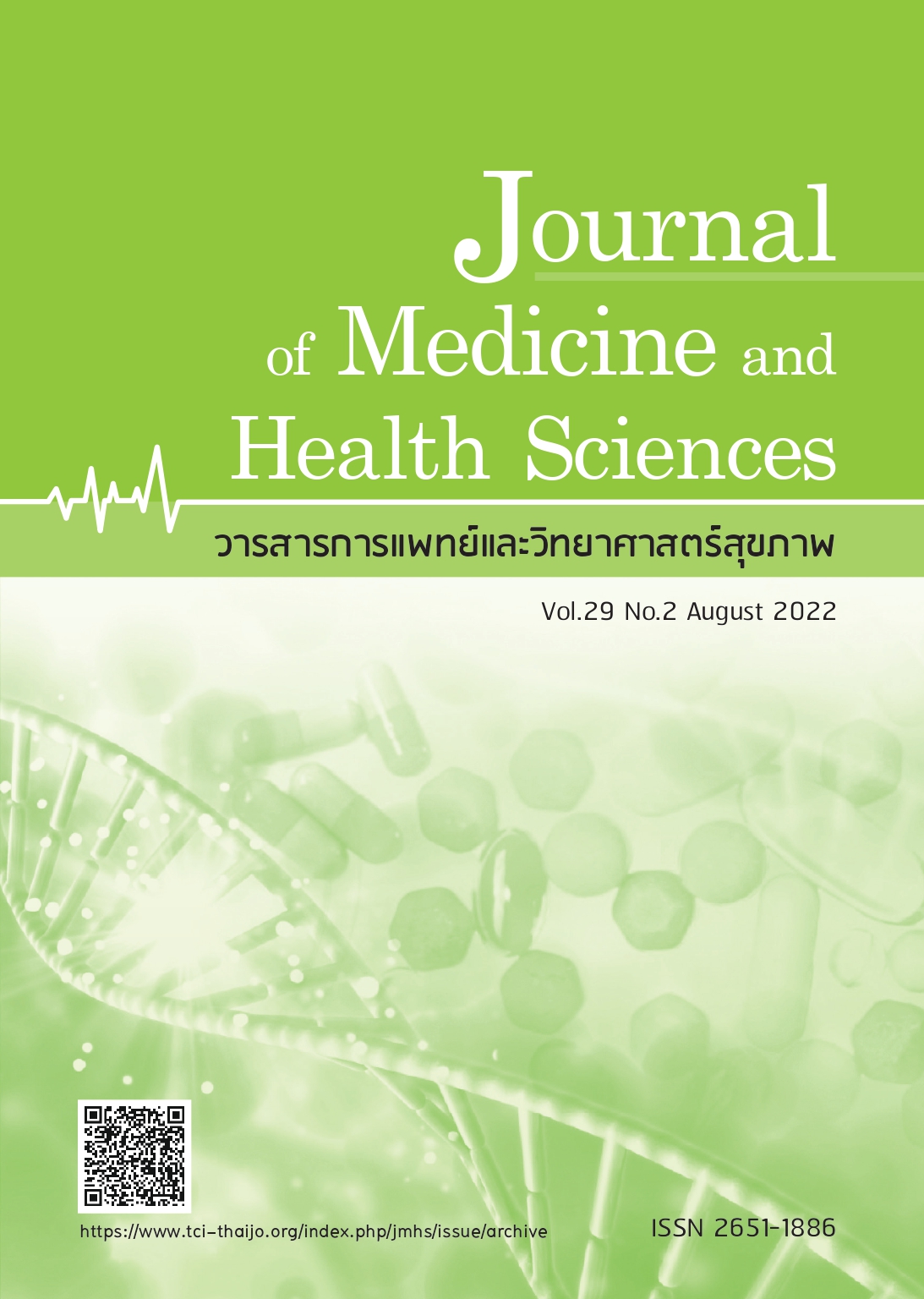Left ventricular ejection fraction from magnetic resonance imaging and transthoracic echocardiography
Keywords:
Left ventricular ejection fraction LVEF, Transthoracic echocardiography, Magnetic resonance imagingAbstract
Abstract
The left ventricular ejection fraction (LVEF) is an important and influenced parameter to describe systolic function. The normal value of LVEF in a healthy population is above 55%, and based on magnetic resonance imaging(MRI) and transthoracic echocardiography (TTE). This study aimed to compare the different LVEF from both methods by a paired t-test and correlation. In 54 clinical stable patients, aged between 4 to 37 years of age, 54% were male, and 46% were female who underwent MRI and TTE for a duration of 10.7 + 8.2 months. The results showed that the LVEF from TTE (M-Mode) was greater at a statistically significant than the MRI, at 66.7 + 7.1% vs. 60.3 + 8.8% [95% CI=9.14 - 3.70] and showed weak positive correlation (r= 0.23, p-value< 0.05). Although the MRI is the gold standard to measure left ventricular ejection fraction, but the TTE is important in deprived areas because of the simplified method and the economic aspect of lower costs. TTE is one choice to measure LVEF, which users should know about, particularly the differences and the properties of both tools.
References
Foley TA, Mankad SV, Anavekar NS, et al. Measuring left ventricular ejection fractiontechniques and potential pitfalls. Eur Cardiol 2012;8:108-14.
Kosaraju A, Goyal A, Grigorova Y, et al. Left ventricular ejection fraction. 2017.
Stab D, Roessler J, O’Brien K, HamiltonCraig C, Barth M. ECG triggering in ultra-high field cardiovascular MRI. Tomography 2016;2:167-74.
Pennell DJ. Cardiovascular magnetic resonance: twenty-first century solutions in cardiology. Clin Med 2003;3:273-8.
Zamorano JL, Bax J, Knuuti J, et al. The ESC textbook of cardiovascular imaging: Esc Textbook of Preventive Car; 2015.
Buddhe S, Lewin M, Olson A, et al. Comparison of left ventricular function assessment between echocardiography and MRI in Duchenne muscular dystrophy.Pediatr Radiol 2016;46:1399-408.
Tak T, Jaekel CM, Gharacholou SM, et al. Measurement of ejection fraction by cardiac magnetic resonance imaging and echocardiography to monitor doxorubicininduced cardiotoxicity. Int J Angiol 2020;29:45-51.
Macron L, Lim P, Bensaid A, et al. Singlebeat versus multibeat real-time 3D echocardiography for assessing left ventricular volumes and ejection fraction: a comparison study with cardiac magnetic resonance. Circ Cardiovasc Imaging 2010;3:450-5.
Bellenger NG, Burgess MI, Ray SG, et al. Comparison of left ventricular ejection fraction and volumes in heart failure by echocardiography, radionuclide ventriculography and cardiovascular magnetic resonance; are they interchangeable? Eur Heart J 2000;21:1387-96.
Downloads
Published
How to Cite
Issue
Section
License

This work is licensed under a Creative Commons Attribution-NonCommercial-NoDerivatives 4.0 International License.



